#cultural references
Text
In Which I Ramble About Pavitr's Character Design and the Indian Cultural Stuff Related to It
DISCLAIMER: I'm an Indian, and these are all my thoughts and analyses, but I'm also just one person and by no means am I speaking for everyone. I am not all knowing, and I am not immune to being wrong sometimes. These points are all my own thoughts and stuff that I know through my lived cultural experiences and some history and book knowledge, but I've not particularly researched any of these. I'm just out here giving my take from what I know. This is mostly just going to be me rambling, okay? Okay. Let's go!
Anyway okay so I just wanna go from the top down:
No. 1:
First of all his hair
His fucking hair
This is one aspect that i k n o w I'm overthinking and probably wasn't as significantly thought out in the design but it just Spoke to me and by all accounts I'm not the only one
But I'm so glad we have him with his thick gorgeous fricking hair, especially them being like curly/wavy and slightly long instead of straight and cropped or whatever
Like. Indians usually have very thick and luscious hair, not everyone ofc but generally it's a thing, and it's considered a point of pride to have long dark thick hair.
And the thing is for the longest time the beauty standard in India was to have very straight and shiny hair, all the actresses and heroes were doing it, even though that's literally not the realistic case for a lot lot LOT of Indians. There's a pretty big variety of hair texture in India; some of it is regionally concentrated too, eg. in South India you get a lot of frizzy, tightly coiled hair that's rough textured, whereas curly hair is usually silkier and looser curled as you go Northwards,, Bengalis tend to have very wavy thick hair,, etc. By no means a rule or anything, it's just a thing that there's a lot of curl variety and a lot of it was for the longest time considered ugly and unkempt (there are some classist/regionalist elements to this stereotype also unsurprisingly) still is by some people,,, bc the standard was Shiny Straight Hair. It's a standard that's slowly shifting. It's currently leaning more on the wavy and voluminous side. But it's def a thing still.
All that to say, it makes me so so happy to see Pav with his curly-ish lush hair that he wears with such pride and style,, that are a symbol of his own pride and self care too!!!
Also the line about "coconut oil, prayers and good genetics" - I LOVE THAT REFERENCE AHAHABSSK, using coconut oil for the hair is a very common thing here, it's so so good for the hair and the scalp alike and it's relaxing to massage it in too.
I've seen people try to write Pavitr in fics as "quickly brushing some coconut oil through his hair" as part of his morning routine and. Um. That's not how it's done askaskjas, I don't mean to be rude to the writers at all, everyone does the best with what they know and no one knows everything, but also practically speaking that would be greasy and awful.
There are multiple ways to apply coconut oil, ofc. Coconut oil is often massaged into the scalp and rubbed into the hair like an hour before washing, sometimes with lemon juice mixed in, and then washed off when bathing. Some people, especially those with drier and finer hair, apply it as a regular after-hair-wash thing, too, but even so it needs to be rubbed in.
A really beloved thing we have is coconut oil champis, too! This is basically when you sit down cross legged in front of youe mother/grandmother, and she massages the coconut oil into your scalp and hair in a way that literally cures all tension and headaches and leaves your head reeling and is so so good for hair and stress and everything. It's a family bonding thing more than just a hair routine. It's not always done by the mom/grandmother ofc, it's just how most of us first experience it, and they have a technique that none of us can ever quite replicate to the same effect later. As we grow up, we often do it for ourselves and for others. It's a weekly or monthly or even just occasional thing depending on who you ask. But yeah that reference was great I love it dearly!

Also about the hair length
So in the current modern "civilized" standard (Indian schools and society in general tend to do a lot of shit trying to assimilate us into western culture and stamp out our own,, for example all my life I've been in schools where speaking Hindi and Telugu and stuff in class or in the hallways was Wrong and Forbidden and We Must Speak Only In English Bc We Are Educated And Cultured. This is so fucking hypocritical bc they would also have Hindi and Telugu classes and then criticize us for not getting it right or whatever), boys are meant to have short hair. Teachers literally single boys out in class for leaving their hair longer, not the exact length they set as the limit. This was my entire school experience; thankfully it doesn't seem to be the case in college, but that may just be bc I'm in an artsy college. In the workplace it's less stringent but it's still a thing.
HOWEVER, historically and culturally, long hair was considered good and even Important for both men and women. There's huge regional variations in this ofc; Maratha peshwas and higher classes and stuff for example wore a "pilaka" (idk what else it's called), which is the head shaven clean except a tuft in the middle that's sometimes braided. Brahmins still do it too.
But my point being, long hair was considered good for the most part, at most it would be worn in a bun for fighting and working,,, braids are a pretty big deal too. Having to cut your hair short=a symbol of dishonour and/or exile, or reserved for menial workers and so called "low classes".
(This is not stuff you even get explicitly told btw. This is stuff I've mostly inferred and studied from history and mythology and stuff , so there's no guarantee I'm 100% right)
Also, in Sikkhism (I'm not Sikh myself so correct me if I'm wrong, this is just what I know) having long hair is super fucking important for men. The hair is wrapped up in the turban, and the turban is a symbol of honour and pride and literally considered life. The long hair is considered sacred.
Removing the turban is basically a symbol of literally losing your honour pride and sense of self,, not just in Sikkhism, just generally at this point. Cutting your hair? Insult on injury.
Pavitr doesn't have particularly long hair ofc
But having grown up with such rigidly enforced things abt boys having very short cropped hair, it makes me so happy to see an Indian character who defies that.
Also!! Quick tangent about braids and their significance,, they're considered very beautiful and another symbol of pride, intricate buns and what not too! Just wanna drop this to give you an idea of what i mean:
In the Hindu myth of the Mahabharata, Draupadi, the wife of the Pandavas (she's a very interesting and important and beloved character, regionally also considered a goddess, she was a princess born of fire married to five princes and the vengeance for her honour literally fuelled the war for righteousness etc etc) vows never to braid her hair again until she has washed it in the blood of Dushasana, a man who forcefully tried to disrobe her in court (it's a whole myth of its own). At the apex of the war, Bheem, her husband, brings her his blood. She washes her hair in it and then for the first time in thirteen years, she braids it.
Braids are not as significant now but it was basically a Pretty Big Deal and I just wanted to talk abt it.
In Hinduism too the gods are portrayed with long hair, it's a Thing.
No. 2:
Okay so moving more downwards,, I have a bunch of Thoughts abt Pavs mask design!

Okay so obv we have the spiderweb-pattern that's a given.
But. The interesting parts are these:
The bindi-like design on his forehead.
Bc my point is
Sure that looks like a bindi. And that's beautiful in itself but I HAVE ANOTHER TAKE
Bindis are traditionally worn by women as a symbol of beauty, prosperity, and again, pride. But while nice, that's not quite a symbolism that fits imo
You know what else is ver similar where my mind immediately goes? A tilak.
The shape is kind of off for a tilak actually, a tilak is more of a U or a V with a dot or a flame-like stroke in the middle. So in that case it looks more like a bindi
But i really like thinking that it's inspired by a tilak too, bc
While a bindi is a decorative mark stuck or painted on a woman's forehead as a symbol of beauty and prosperity
A tilak is basically a mark that's finger-painted on the forehead of , usually a man but there's a softer smaller version for women too and ofc there are women warriors who got tilaks, for auspicious and blessing reasons. So in a Puja or ceremony, a tilak is put as a blessing and an auspicious thing, also meant to impart strength. The head of the household usually gets the most striking or biggest one.
Pandits usually wear tilaks for blessing purposes too, although their design is different and more elaborate than the ones given to others
Gods and goddesses had their own tilaks, some of them very distinctive like Shiva's
The part that applies to Pav is the warrior tilak
Basically before a king or warrior went to battle, it was customary to do a small sending off ritual and for the wife or mother to put the tilak for them and say "Vijay bhava" (may you be victorious)
It's still done for big undertakings and challenges like exams and new jobs and stuff.
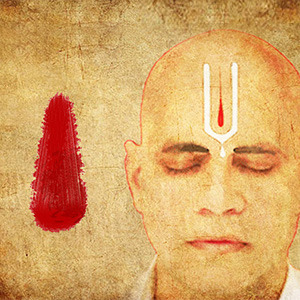
It's basically for strength, bravery and victory
The main difference in a bindi and tilak is the intent:
Bindi is for beauty
Tilak is for valour
Which. For a HERO. Just. Chef's kiss.
2. the markings around his eyes!!
I'm sure this has been said before, but it's very very reminiscent of kathakali makeup.

Regionally there's a lot of eye makeup stuff also btw. There are some absolutely beautiful tribal designs and regional designs with a lot of colours but I cant remember specifics rn
Also!! The very distinctive black lines around Pav's eyes?? I love them sm bc they feel so so based in kohl and kajal. Another huge beauty and often pride related thing.
There's even a whole thing where a mother or older sister will often rub a bit of her kohl off on her fingertip and press it behind their loved one's ear so that "buri nazar na lage" (no one's bad gaze catches you). It's called a kaala teeka
The idea being that you're so beautiful and/or cute and bright and lovable and nothing should jinx that and nothing bad should happen to you. It's very rare now and I've never experienced it myself but it's so so precious <33
3. the white markings on his cheeks!
I've seen that explanation of how it's reminiscent of Ganesha, the elephant headed god who is kind of a symbol of new beginnings, intelligence, prosperity, and a ton of stuff I don't even know how to explain honestly, but he's very cool and beloved and has a lot of Good Vibes™ and i love him basically.
I personally am reminded more of kathakali makeup again!! But that explanation is very cool too and i like it!! I don't know if I agree bc i think it m i g h t be a blasphemy to have that imagery on your face, afaik no one here does it for any reasons and we have literal festivals and pujas dedicated to Ganesha
But then again I am a human with limited knowledge and i don't know everything
I personally think the tusk like designs are very cool. However, I also think it would be a bit of a No No for religious reasons. I also think it reminds me more of classical dance face makeup and stuff.
I also think if they meant to make it a Ganesha reference, then he should only have a tusk on one side, bc there's a huge deal about Ganesha being "ekdanta" (transl: one toothed) bc he has a well known myth of breaking off one of his tusks to write a mythologically and culturally significant epic.
There are also a lot of actual cultural face painting things in India that are way cooler than the Ganesha thing in my opinion. So while that theory is cool, I don't personally agree with it. I could be wrong, again, idk what the design intent was exactly.
No. 3:
Next thing: this is a very very small thing and i only have a sentence on it, but i really appreciate Pav's neckline in his suit.
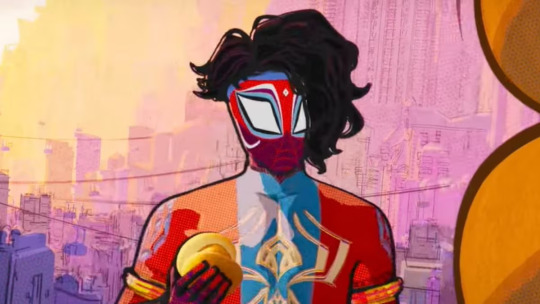
The neckline here? That's the kind of cut that's most typical of kurtas. Especially more ceremonial, kingly, wedding sherwani, or generally festive attire; a regular kurti might have a v-neck or something, but this curved collar? Very Indian and classy in a way I can't fully explain.
No. 4:
This next thing I'm going to go completely ballistic about, everyone hold on to your seats!!!

THE FUCKING MOTIF ON HIS UPPER ARMS. IT'S EVEN ON THE MEHENDI-ISH PATTERN ON HIS WRISTS AND HANDS. THE SPIDER SHAPE TOO. I AM NOT NORMAL OKAY
LISTEN.
LISTEN TO ME
TBIS IS CONFIRMATION THAT KRISHNA PAVITR IS CANON
HE IS SO SO KRISHNA CODED
Idc if I'm delusional, i DARE you to look at that blue design and tell me it doesn't look like a peacock feather
THE SHAPE OF HIS FUCKING SPIDER IS OH SO SUBTLY CURVED TO BE PEACOCK FEATHER SHAPED TOO
There is no human way for me to be normal about this i need a minute
Okay for context:
Krishna is a very important and beloved god in Hinduism. I cannot overstate the love I have for him, even being mostly non religious myself.
There is SO MUCH about him he is such a big deal and thanks to him being made a character in popular Indian cartoons and so many animated and live action movies being made about him, he is literally woven in the fabric of our collective consciousness and love for our culture
He's a mischevious and fun and chaotic and lowkey antiestablishment kid deity. He contains the literal universe. He has a deep abiding love for his people and his family and loved ones and the world he serves. He is a dancer, flute player, sweetheart, lover of life. He has a thousand wives, yet one Radha who he never married but is his literal immortalized soulmate. He guides heroes to duty. He is full of wisdom but also silly hijinks. He is so so beloved.
The peacock feather is his symbol! You could see the peacock feather anywhere and it's immediately OH KRISHNA! He wears a peacock feather, famously. In all his iterations, from childhood to adulthood. Peacock feather is his emblem.
Krishna is depicted through the peacock feather. It's become a very common motif in arts like mehendi and various textile arts to have peacock feather and peacock patterns; I'm sure that existed before Krishna too in several cultural circles but he is definitely a huge part of it since. There is a chikankari motif that is very recognisable that's reminiscent of peacock feather but I'm mostly unsourced on that, going off my own interpretation
But there's a definite link between peacock feather=Krishna=inextricable part of culture and art.
At least in North India. He's less of a big deal the further south you go. Still very widespread and overall loved tho.
So anyway seeing that peacock feather type motif on Pav?? Mixed with his Spiderman identity??? Is so amazing to me.
Krishna coded Pavitr real ✨

(Also yeah people have already pointed out that Pav's hand designs are based on mehendi so I don't need to go into that askjasjkas)
No. 5:
Also. Huge fan of his arm cuffs. It's just another Indian warrior thing; often in ye olde times and in mythology, the cuff would be a lot simpler, often just a thread with an amulet to grant you protection. But it steadily became fancier, and now it can be decorative or a valour thing or both
Very often just decorative now actually. Often seen in weddings and ceremonies too
No. 6:
Okay about his bangles now:
I absolutely LOVE THEM I love them so much I am so obsessed with them actually!!
So. First of all
I remember there being a confusion in like earlier fics especially on whether they were bracelets or damrus or bangles or what
And i have Thoughts
So first of all
They are not damrus/damarus.
Damarus are a musical instrument made of wood and with two beaded ropes to beat on the small drum-like ends. They're also symbols of lord Shiva who uses a damaru.
They are very different from what Pav wears and i remember my fucking whiplash when earlier fics called his bangles damarus. I think i choked on my maggi.
I don't mean to be rude to the writers ofc, they were doing the best with what they knew. But it's just very jarring to me to hear that
I think an explanation I heard was that Pav's web shooter design was inspired by damarus? Which yeah I get that and I actually wanna talk about it bc I very much see it. But they are very much NOT damarus themselves
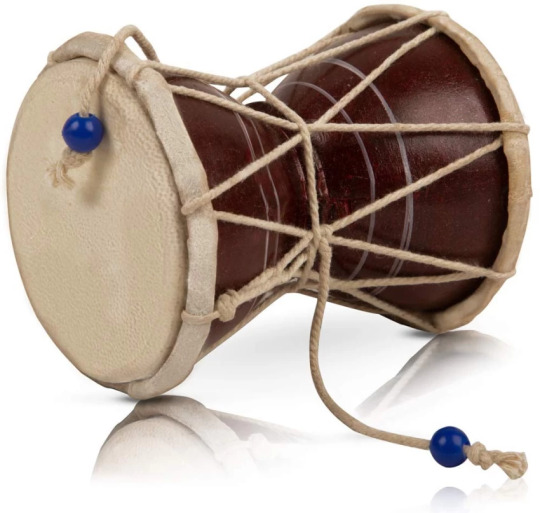
So
First of all i personally have never seen nor heard of the kind of bangles Pav wears which appear to have a strip of cloth in the middle? While being gold cuffs on both ends? Which is new and interesting actually and opens up aspects abt his character that i find really interesting
Bc first of all: that implies he made them himself from stuff he already had inspired by things he saw. It seems, at least to me, like he used bangles/kadas he had to make the shooters he uses, which are designed the way they are for easier slinging and his cool tricks with them which would be harder if they were solid gold, and also the shape when he does the cool yoyo-y trick and hits The Spot with it and everything is very damaru shape. Which is also pretty cool if it's meant as a reference to Shiva and his damaru (he's a very fierce god with the damaru) or a reference to the street performers who use it nowadays.
Either way - and also additionally the fact that PAV LITERALLY DOUBLED HIS BANGLES AS WEB SHOOTERS WHICH IS SO CREATIVE AND SMART - and developed his own whole signature skillset with it?? And made his own bangle/shooters as I said before????
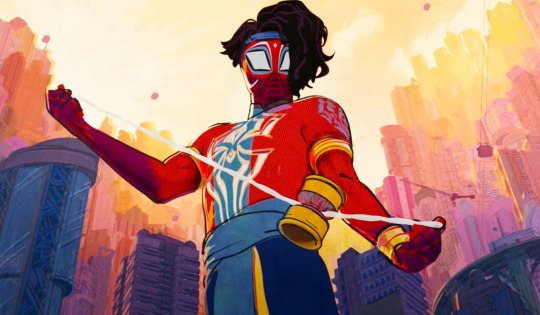
My boy is PEAK jugaadu
He is the embodiment of jugaad
Never has anything been so true to the Indian spirit than jugaad
Okay so for context, the jugaad that I keep talking about:
It basically means makeshifting and/or inventing stuff you need from the limited stuff you have. That's a very simple way of explaining it. Just imagine that, but up the silliness level x100.
For example, a guy jugaaded a showerhead by poking holes in a sprite bottle and putting a hose in it and routing it to the tap.
Jugaad can be both very smart, and very funny and silly
And it usually involves combining useless stuff/trash/just stuff you had lying around to make smth that you didn't wanna waste money buying, and often ends up having more functions than the stuff it was meant to replace. This but it's also very crackheaded. Like idk how to explain. It's basically makeshifting, but it's just developed into such an Indian Spirit Thing™ that we have a word for it
So i love that Pavitr's bangles do all of that. He is a true Indian boy to his core!
No. 7:
Okay I have thoughts on his dhoti too!
So.
Blue.
I know why they used blue for his dhoti, what with the spiderman colours, the need to complement his bright red with smth softer, and everything. I get it and i love it so so much. What I'm about to say next is not a complaint against this at all, it's very good design imo
But.
Everytime I look at him in his fucking blue dhoti
I just remember all the times my grandmother has apprehended me and made me go and change for trying to wear blue or black at a Puja
Bc they're apparently unholy colours ;_;
Basically yellow, saffron, red are the appropriate holy colours. Now that i think about it, I've never seen a god or mythological king depicted in a blue dhoti or generally blue clothing either - farthest they go from the three i described is pink or green
I never really thought about it until my Nani pointed it out. I'm still not sure if anyone except her even knew or cared about it.
But that is the memory that bonks me on the head every time i Perceive the blue dhoti
Bro upgraded from funeral colour (white, which is his dhoti in the comics and absolutely infuriates me on a visceral level) to unholy colour askaskjjska it's so funny to me
Purple was still a luxurious colour, but generally warmer and/or lighter colours are The Done Thing. It's an old notion and the cultural connotations are now very diluted by Western influence and also none of us Caring about a lot of it anymore (not necessarily a good or bad thing particularly)
Indigo also has. Loaded connotations.
Because Britain did a Colonialism and a lot of Indians suffered for it. It's a whole history lesson.
I would rather not get into the whole details but basically Indigo (the plant from which the dye was made) was a valuable commodity and Britishers essentially forced farmers to grow only that, ignoring their need to grow food or sustenance or care for the land in general, especially in the Bihar-UP regions. There were eventually a lot of revolts where many people, esp farmers, died.
Basically a double whammy of starvation and death as a direct result of colonialism. It was a major part, historically, that sparked rage for the freedom movement
If you wanna learn more abt it you can search up Champaran farmer revolts!
Also about the drape of Pav's dhoti:

I've seen a couple of memes and reels abt how Pav, in an emergency, suiting up for Spiderman duty, would be taking an hour to drape the dhoti and stuff
And those are hilarious and i love them
But also
That's literally not even a proper dhoti -
So the thing pav wears is basically more of dhoti-pants with a cummerbund.
So okay I need to explain this better hold on
A dhoti is basically a sheet of fabric that is draped around the waist and down. The elaborateness of the cloth can vary vastly from intricately patterned silk and brocade, to plain white cotton with a thin gold border optional
The drape of the dhoti varies even more depending on region, occasion, occupation, and status. You can have everything from the casual simple towel like drape and tuck that some men wear to relax on a daily basis, to an intricate thing with many folds and pleats and tucks and the middle part that hangs (I forget the name for that) that would actually legitimately take hours and is often adorned with jewellery . To a thing that's flexible to move in and also looks very pretty and is genderneutral some dance forms call for.
Basically. The drape varies vastly. And it's all one cloth, maybe a second one for a separate cummerbund sometimes, I'm not that well versed abt dhotis tbh.
But the thing Pav wears?? It doesn't seem to me to be folded the way I've ever seen any dhoti
The way it's folded and shaped is not how those style of dhotis work. There would be a lot more pleats and folds, for one. But it's not shaped the way to match the less-folded dhotis either.
Now, I'm no dhoti expert, but that leads me to believe that's not a full on dhoti. What it's more likely to be is dhoti-pants
Dhoti pants are this fusion thing. It's in the name. I haven't seen it much but I know/think/am pretty sure its a thing, bc most Indian guys now don't know how to drape a dhoti either and it's a good solution. Worn like a pant, looks like a dhoti. Simple. A cummerbund for the middle drape, and you're set!
Also side note: the fold with the distinct two legs and the middle drape that Pav has? Is the most commonly depicted warrior and king drape,, at least in North and Middle India, I'm not as well versed about the South but I think it's the case there too. The gods are depicted in that drape too
I have fewer comments on his leg design, I like that it's reminiscent of mehendi even on his feet bc yeah that's also done on the feet, although rarer now and also a bridal thing
No. 7:
He has gold cuffs on his ankles that I really like!
Okay so here's the interesting thing:
I could be wrong, but
But that kind of thick ankle cuff is not actually an Indian thing?? At least not in the warrior hero context that a lot of his design seems based on. At least not of that shape and width.
What we do have though are very simple metal ankle cuffs put on (I think) one ankle of young kids for protection,, again a tradition I'm not very familiar with, it's more localised
The other thing we have that's more interesting tho:
We have payals and ghungroos!!! Which opens up so many exciting prospects to me because those are both dancer things
Like. The payals are ornamental. They are beauty things as well. All women would wear them, their elaborateness and style depending on status, money, and region ofc
They double as dance and performance things too ofc
But ghungroos are specifically dance things
Very very sacred and honoured to the dancers, too. Quite personal
(These are all little bells on the ghungroos btw!! Hundreds of them. They ring out when the dancers dance)
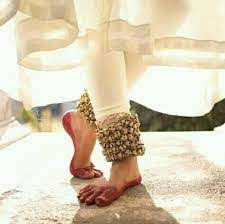
This is what Pav's ankle cuffs most remind me of. It's not the same thing ofc, and idk if the designers were even thinking of this.
But it would be really cool if he was inspired by ghungroos to have cuffs of similar thickness and placement on his legs. Perhaps even familiar to him hmmm?
This is me theorizing HARD to support my headcanon, but combined with Pav's classical dance-n-martial-arts-y moves, i present to you: Pav learning classical dance when he was younger (a thing that a lot of Indian kids do and only a few seriously continue for their lives) is real.
I rest my case
Like yeah it's known at this point that Pav's moves are based a lot off the martial art of kalaripayattu. Which is SO AMAZING AND I LOVE IT SO MUCH!!! But I also think this would be a cool influence alongside that, bc it really feels visible too.
No. 8:
The fact that Pavitr is barefoot is so so important and dear to me!!!
In Indian culture, you're supposed to take your shoes off as a mark of respect, before entering the ranabhoomi (literal transl: battleground, but not in an actual war with swords and shit ofc)
Being barefoot for pujas and in temples and on sacred ground in general is very important
As is being barefoot when you're walking onto a kabaddi or wrestling ground,, basically any fight that's supposed to be important and/or with honour. It's a respect thing for the opponent and for the earth you fight on.
There are a lot of contexts where being barefoot is important or a given
There's the prayer ground bc it's sacred and holy and you can't be dragging your dirty ass shoes there it's super disrespectful. You gotta enter with clean feet specifically, dirty feet are considered disrespectful too. that's also why there wil often be feet washing areas outside of temples here
Then there's the ranabhoomi that I just said, which is more of respect for your opponent and the earth. Respect to the earth especially is very important in the combat forms and sports I know of at least
Then there's the basic respect and tbh the hygiene thing too, of always taking off your footwear before entering another persons house. That one is more flexible, sometimes you can take it off inside, but the done thing is to take them off outside generally. Especially if you're a guest who's not particularly close. You'd be considered really rude if you didn't take them off at all. But again that still varies by person,, the older generations are way stricter abt it
Then the bride thing,,, it's actually a whole small ritual. The bride and groom will enter the groom's house for the first time,, which is considered the bride's new home bc misogynistic tradition so yeah. But basically it's supposed to be an auspicious beginning to a new home and life. (Btw being barefoot during the wedding ceremony is also generally required)
Usually, at least in North Indian tradition, a small vessel of rice is kept at the threshold that the bride must tip over with her foot when entering. It's for prosperity. Then she steps directly into a plate of a red liquid I forget the word for, but it's basically a sindoor paste type of thing. Her first steps into the house must be taken leaving those red footprints behind. That's for auspicious beginning
So Pavitr being barefoot is so so cool from a cultural and a character building standpoint
He takes his job seriously, he does it with respect and honour!!! He seems so chill and happy go lucky, but he's deliberate and respectful abt it!! And he's super connected to his culture too, bc you could just Not and no one would care, but it's so important that he does!!
So yeah!
That has been my full ramble askjasjkas. If you made it this far, have a cookie! Thank you and I hope this was interesting <33

#pavitr prabhakar#atsv pavitr#spiderverse pavitr#spiderman atsv#across the spiderverse#spider man: across the spider verse#character design#rant#starr rambles#analysis#design analysis#character analysis#culture#indian culture#cultural references#pavitr my beloved#myths and legends#chaipunk#goldenpunk#spiderman india#india love#indian#long post
412 notes
·
View notes
Text
#LongPost: A Few Hyper-Specific Things About India for India-Based Stories and Art
No this isn't a cry for more Indian-rep in Spider-Verse stories. (It is.)
Anyway. I recently went to India, and after returning to my hometown in Tamil Nadu, I reintegrated a whole slew of memories and collated new facts.. And considering I've been wanting to do one of these for quite some time (and because I need a new variety of Pavitr Prabhakar content), I thought it'd be cool if I shared some of my experiences and ideas with you.
It's best to take this with caution, though: the only places I've been to are Tiruchirappalli, Madurai, and a few towns located close to the Eastern Ghats, so my knowledge is heavily South India-based. I know for a fact that there are various similarities and differences between other geo-cultural areas of India, which is I why I've linked the other cool India Resources here as well.
In Which I Ramble About Pavitr's Character Design and the Indian Cultural Stuff Related to It by @chaos-and-sparkles (+ my addition + @neptune432's addition)
A culture post for the girlie pops (and non-girlie pops) looking to write Pavitr Prabhakar accurately by @summer-blues-stuff (+ my addition + @fandomsfeminismandme addition)
Also a timely reminder of @writingwithcolor's wonderful resources on writing about South Asian characters respectfully and sincerely
Now, for the things I've noticed in South India..
ANIMALS
There are a lot of street dogs. Like... a lot of them. And honestly it's so hard not to go up to one and give them a snack or two. The most notable dog breed is the Indian pariah and they can be found all over India. Mixed dog breeds are also common and results in a variety of features like differences in build and coat colours.


There are also other types of animals are pretty common to see alongside the roads.
Cattle are seen a lot (cows and bulls are easy to distinguish; cows (left) have udders and a small hump on their back, while bulls (right) are generally stockier and have a super-defined hump on their back). I'm pretty sure the specific cow breed is the sahiwal cow. They are either herded into paddocks for grazing or can be found wandering city streets on their own.

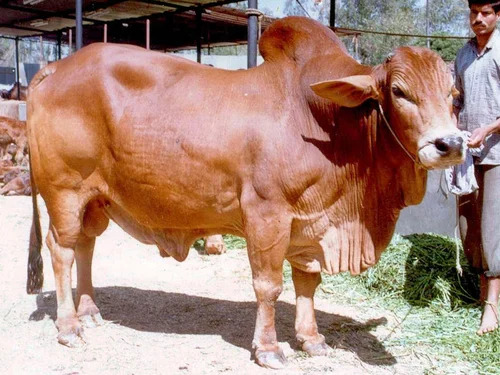
Goats are often herded by farmers into large masses of wool and horns and are guided to paddocks to graze. Sometimes, like cattle, they'll be found wandering city streets on their own.
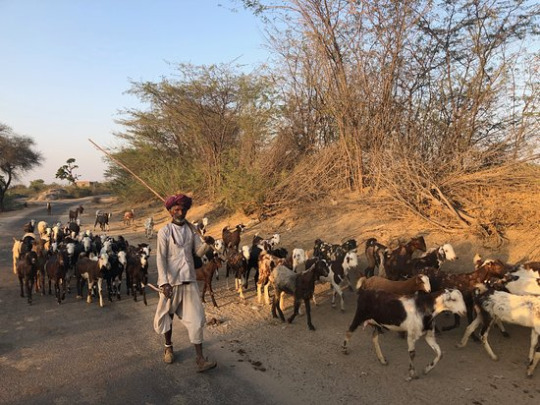
Chickens are usually kept close to stalls and homes. These chickens are not plump and fluffy like most Western chickens, but are quite skinny. Mottled feather colours are usually a result of mixed chicken breeds. In Tamil Nadu, the most common chicken breed is the asil chicken.
Various birds are often seen flying around traffic if they’re not disappearing into the sky, the most common being crows, pigeons and mynahs. (The chart below on the right is not an inexhaustive list of birds; you best search them up yourself.)
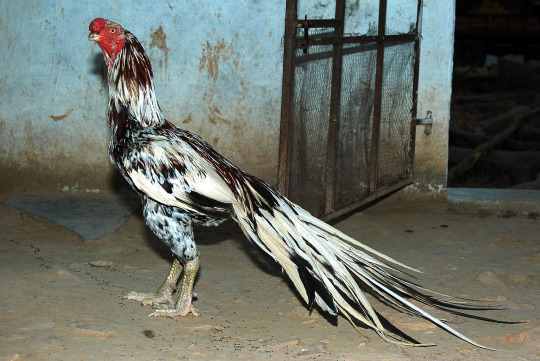

TRANSPORT
There is obviously a huge amount of trucks and lorries and buses. They all have beautiful designs or crazy LEDs or large detailed fluorescent / iridescent stickers that are impossible to ignore, whether it be at high noon or midnight.

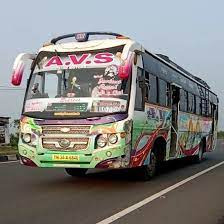
Expanding on that, the most common method of transport are motorcyclse or scooties, cars, and autos.
Also, as expected: traffic is insane. It’s horrible. It’s exhilarating. Western honking is akin to swearing, but here? Honk whenever you want. Honk if you’re happy or if you’re sad. You get a million dollars if you honk. You need to honk. It’s more important than breathing
Similarly, road rules don’t exist. Well, they do, and the Indian government does everything it can to make sure people do follow the rules, but based on the aforementioned honking, most people don't. Everyone just drives. Most bikers and motorcyclists don’t wear helmets. Only a few people wear seatbelts. Cars and motorcycles drive on the wrong side of the road and right into oncoming traffic. The chance of someone dying is 99% but it’s countered by desi stubbornness.

ENVIRONMENT & INFRASTRUCTURE
Houses and buildings are painted different colours!!! Pastel pinks and purples and deep teal hues, either plain colours or decorated with elaborate murals. This also applies to interiors. I reckon it was surprising to a lot of people when they were confronted with Mumbattan's vibrant colours, but honestly: coloured buildings slap, and it's based on the real thing. They are a sight to behold. Couple that with the architecture and oh boy- you've got such a beautiful environment.






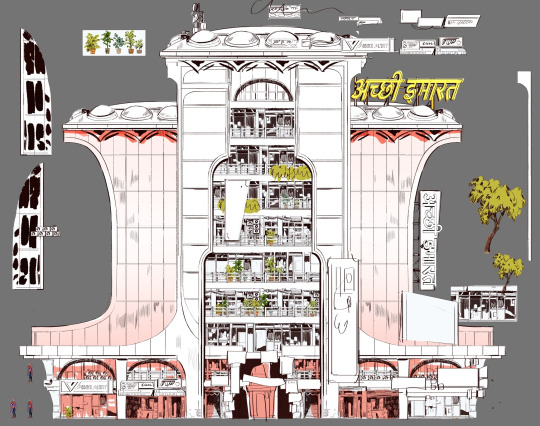
From @jettpack's concept art for Mumbattan buildings

jettpack's concept art of the Mumbattan collider
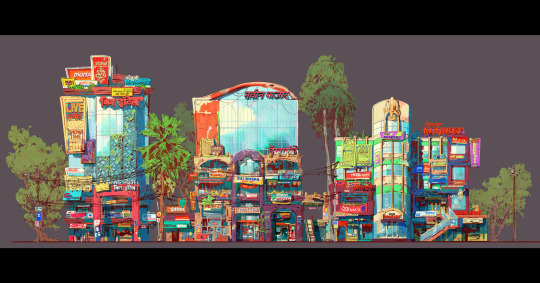
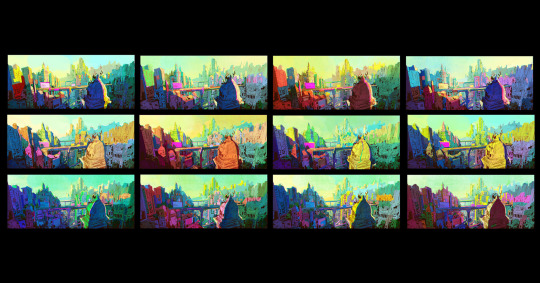
From @chenfelicia's concept and colour keys of Mumbattan
Don't be shy to really immerse in crazy descriptors - that's how you capture the liveliness of cities like Madurai and Mumbai and ultimately, their physical manifestations like Mumbattan.
Funny enough, movie posters and political banners and flyers are EVERYWHERE. They’re huge and take up entire billboards, or congregate along walls so it becomes practically a collage. It's impossible to ignore the image of "Makkal Selvan" Vijay Sethupathi about to beat some poor loser into a pulp with a stick, or the political parties roasting each other on paper with impressive photoshopped graphics.
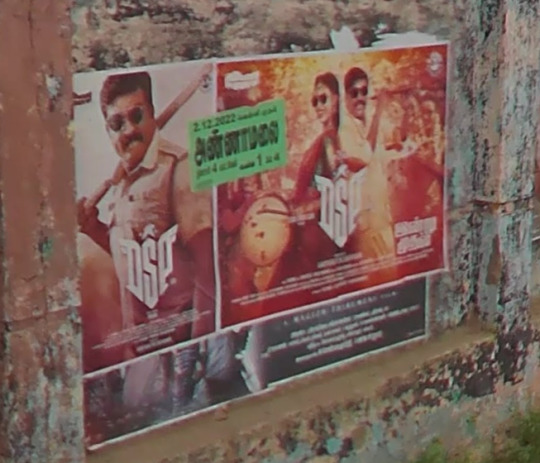

To tie in to the point about transport: there are hundreds of coffee stalls and snack shops and one-of-a-kind food stands. You can’t go 200 metres without running into one, either on the highway or in the city. I remember having jaggery coffee on my first night in India, and guys- it tasted so fucking good. I only wish I can transfer the taste to you. Absolutely splendid.
The climate in India is generally very humid and warm, but that doesn't mean we don't get cooler days; it is obviously cooler on winter nights. Also I've heard from many conflicting sources on India's seasonal weather (probably due to India's geograpghy), so you will have to talk to someone who is from India to really confirm. I've somewhat boiled it down to five seasons:
Summer - May-Jun; very hot (35-45ºC/95-113ºF), characterised by shrinking water bodies and droughts if there aren't any rainfalls; this time is good for plant growth/harvest if you've successfully managed water supplies
Monsoon - Jul-Aug; (34ºC/93ºF) very variable in terms of timing, characterised by torrential rains and floodings; the raining itself probably lodges somewhere in Jun-Sept but the aftereffects are felt long after the rains have stopped
Autumn - Sept-Nov; cooler but humid (25-35ºC/77-95ºF), and generally much drier since it transitions from autumn to winter
Winter - Dec-Feb; much colder, but the extent is dependent on geographic regions (20-25ºC/68-77ºF)
Spring - Mar-Apr; humid (33ºC/91ºF), sudden downpours, only occasionally do you get pleasant weather in this time
PEOPLE AND CULTURE
For some reason, there are still loud speakers blaring out music across the roads and as far as a few city blocks. I honestly thought that that had died out by the time my parents had graduated university, but it still seems like people like hearing music played at 120 decibels.
This is a complicated issue but people are not piss poor. Yes, India is a developing country, and yes there are slums and there are homeless and there are those who are stuck in a horrific sociocultural cycle, but people are rapidly getting into high-paying jobs at much higher rates than before. Overall, India is getting better; do us a favour and not have us be represented by the same poor struggle-riddled Indian stories that Hollywood and Western media is are fond of portraying.
@neptune432: One thing I think it's important to acknowledge though is how your experience in India changes depending on your caste. I feel like most of the indian voices talking online are savarna (I'm not an exception) so this doesn't get brought up as much. It's a complicated issue and one that I don't think non-indians (or savarna indians) should worry about tackling in their work, but it's worth saying because what's assumed to be everyday aspects of indian culture are actually specific to things like caste, class, and what region you're in.
ex: in kerala, there are also examples of people eating on banana leaf with lots of vegan food for special occasions (namely during onam). but veganism is heavily tied to brahmanism so most of these people will be savarna. even if they eat meat otherwise, the specific interest in eating vegan for special occassions has clear implications. Though many people of different castes eat meat, it's a practice that gets discriminated against, being treated as barbaric and unclean. this is because of brahmanism and is usually only strictly followed by brahmins. dalits/bahujan usually face the worse treatment for their eating traditions.
there's also the fact that hinduism is more of a recent term and a broad umbrella where many different gods and cultures have been put under (and usually done forcefully). a lot of local dieties and specific cultural practices come from outside the vedic traditions of aryans (upper caste north india), but now are treated almost as one thing. ex: kali is a south indian (dravidian) goddess who's still heavily worshipped there and who later got adapted to brahminical traditions. that's also why south indian practices of worship are different from the north and are discriminated against ex: north indians getting angry at the idea of worshipping kali by drinking alcohol and smoking even though it's an older tradition than theirs. these traditions are often connected to dalit/tribal cultures as well, which adds to why these traditions are attacked.
Now, I don't feel comfortable with non-indians writing about india in general but I feel it's important to mention these things cos most people don't even realize they're only getting shown certain perspectives. How many people don't even know they're a north/south divide, for example? People are fed narrow viewpoints on India and assume that's everything to know. it's a problem cos that's what the brahminical forces in india want. This is all very general info too and I'm no expert so it's worth more research (like reading what dalits have said on their experiences). I'm not trying to criticize you btw, I just wanted to add some things cos this has been on my mind for a long time now.
Couldn't have said it better myself, neptune!! (I barely mentioned it at all lmao) The caste system despite it being "abolished" still defines many traditions within India, and almost always in harmful ways. Like @summer-blues-stuff and I have mentioned in their post A culture post for the girlie pops under the Religion and caste section, it's best to leave the caste and social hierarchy alone even if you've done your research. That doesn't mean you shouldn't talk about it, it's just that people, especially those of non-South Asian decent, have to be extremely careful about it. Introductory resources on the caste system can be found on ABC, Pew Research and The Conversation.
Furthermore, the automatic assumption is that people living in shacks or remote villages have no access to greater populations and resources, which I'm happy to completely disprove. Guys: majority of the people living in my village, a rather remote village, have phones on them. Ranges from iPhones to Androids to good ol' Nokias.
(And, side note: as an Indian, I get amazingly pissed off when people's ringtones are set to maximum volume and play the same famous part of a famous song every time they get a call. Like shut the fuck up. At least quieten down? Please??)
(Also this might be a South Indian thing but Man some people are so entitled. Dudes you do not need to rub your ego into my face. Dudes you can, you know, keep all the cool things you think will get other people jealous out of the public eye. At this point I'm not jealous of what you Have, I'm pissed off at the Audacity To Think You Can Make Me Feel Bad About Myself With The Things That You Have).
Alright. Moving on.
Tiny temples and shrines are everywhere, dedicated to broad-Hinduism deities like Ganesh, Shakthi, or Vishnu; other times, they are shrines built for local deities that protect a particular village. For example, my village dedicated a little plot of water-logged land to a benevolent spirit called Subbamma, where people would leave offerings or place their sick/injured animals at the water's edge so that Subbamma could heal them. These tiny temples are almost always super colourful and amazingly detailed despite their small size


It could be a whole month before a celebration like Diwali but it’s the perfect time to set off hundreds of fireworks and firecrackers. People are just inconsiderate in many ways, it seems.
Some women wear strings of jasmine flowers in their hair. This might be completely regional-based, but most if not all women, ranging from little kids to old ladies, will wear these strings of jasmine in their hair. It's supposed to represent good fortune and beauty, and it smells wonderful.
@esrev-redips: #i usually only visit the north side of india (went to banglore and or chennai once) but im pretty sure most women in mumbai wouldnt wear #flowers in their hair unless they were of an older generation #they dont in new delhi at least and i t h i n k you can compare them but im not sure since i dont live in india either
Thank you esrev!!!!! glad to see an old hunch be confirmed!!!


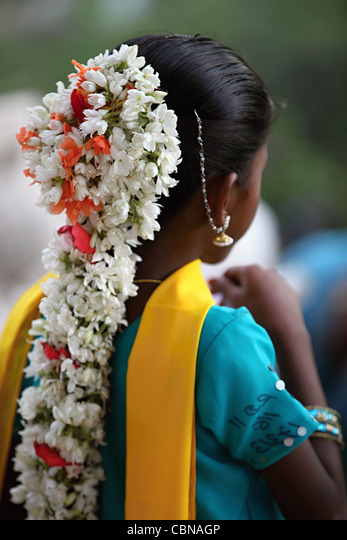
Normally you can wear any type of jasmine, but the common subtypes in Tamil Nadu are ஜாதிமல்லி (jathimalli; "Spanish jasmine"; left) and மல்லிப்பூ (mallipoo; right).


Eating food from a plate made from a banana leaf is more than just an aesthetic, and is often reserved for certain occasions; other times we eat from metal or ceramic plates. I can't vouch for other areas of India but I've been told the reason why banana leaves are predominantly used for large gatherings is because they can signal to diners if the food is rotten or has been poisoned; supposedly the leaf itself starts rotting and releases liquid, but I personally have never seen this happen. But of course, there are also other reasons as to why banana leaves are used (all of which are valid) ranging from being an eco-friendly disposable plate, offloading nutrients into food, or even to make the food taste better. Pick whichever reason you like.
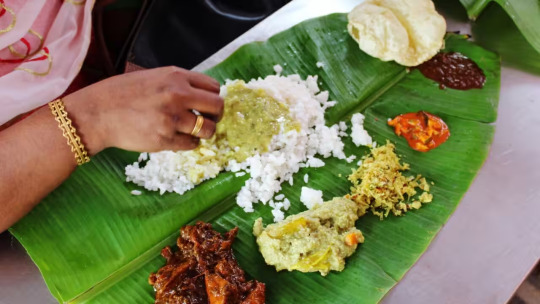
I'm literally so hungry looking at this. (Realises this is a Pavitr thing to say.) Anyway.
FOOD RECS!!!!!!
Reblog with your favourite foods >:) The list will be routinely updated...
JAGGERY COFFEE (from me) - GOOD FUCKING STUFF. ACTUALLY. if you see it.. GET IT IMMEDIATELY
PANI PURI (from @esrev-redips) - #also you forgot to mention the PANI PURI STANDS AHHHHHH YUMYUMYUM | RRRR YOU'RE SO RIGHT. PANI PURI FOR LIFE ACTUALLY.
JASUBEN PIZZA (from @the-witch-forever-lives) - okay this is specific to Ahmedabad | okay but as specific as it may be that sounds and looks delicious??? hello??????
DABELI (from @the-witch-forever-lives) - this too???? also it LOOKS wonderful i need it right now actually
VADA PAV (from @the-witch-forever-lives) - Also Vada pav from Mumbai is so one of a kind | you are absolutely correct. vada pav is truly something magnificent
I think that's about all I can give you right now. This took me a while to type out. Feel free to ask any questions, or if you have anything you would like to add on, like anything I might have glossed over or your favourite desi foods, please do!!! I'll be sure to reblog your addition and update the original post.
The point is that this post can become one of those few other reference posts that artists and writers and other creatives can use if they ever want to make anything related to India, because it's genuinely so cool to see your culture represented so well in popular modern media.
(And in fanfic and fandom. Especially in fanfic and fandom. you have no idea how many times I've gone insane reading a Pavitr-centric fic or reading comments on Pavitr-related posts and it's just outdated ideas and harmful stereotypes and all sorts of sick bullshit, and it's always to the point where I physically have to go outside and bite into a fresh rhizome in order to ground myself. Like damn, people, you need to know things before you start creating)
So uh, I hope this was helpful if not interesting! Happy early Diwali everyone! Knowledge-over-ignorance and all that; hopefully this post does that notion justice!
#pavitr prabhakar#wrote this solely because i wanted more atsv pavitr-centric fics and i need to get that specific immersed-in-india itch scratched#and also because the india i remembered decades ago is definitely not the india i visited last week#wow time flies doesn't it#spider man india#india#writing tips#o wise writer stuff#indian culture#south asian culture#spider man across the spider verse#atsv#across the spider verse#chaipunk#goldenpunk#cultural references#atsv pavitr#agnirambles
210 notes
·
View notes
Text
Baizhu potential kit leaks below the cut alongside unhinged screaming/rambling because of potential cultural references and lore that may connect with some other characters and mora for a myth and-
so first things first- HOLY HECK BAIZHU HAS A HIGH CHANCE OF BEING A SHIELDER WITH SNAKE-RELATED ANIMATIONS IM AEOGIHAEOGIHA
So! Likely if you’ve been following me for any amount of time, you’d know that a while back id written mora for a myth (genshin fic where vision holders gradually turn into mythical creatures and whatnot) and one of the things i ended up malding over was figuring out who was what.
Long story short, keqing, ningguang and beidou all had creatures that i had felt corresponded to them quite well, and ngl, the correlation to the four cardinal directions was at first a bit of a happy coincidence, then more of a holy shit this might be a thing.
So! why the preamble? Well, in chinese mythology there are four guardian beasts/cardinal beasts/whatever tf you want to translate them as that correspond to the four directions. They are the white tiger, vermillion bird, azure dragon, and black turtle.
And as you can see, four characters from liyue pretty closely follow these motifs.
Keqing with the white tiger, Ningguang with the vermillion bird, Beidou with the azure dragon, and now Baizhu with the Black Tortoise.
But wait! you ask, wtf does a black Tortoise have to do with baizhu other than being tanky (which he is not, because he is a frail, frail man searching for immortality)? Well, I’m glad you asked, because the black turtle is also known by another name- the Xuanwu.
And Xuanwu isn’t just a tortoise, but a tortoise combined with a snake. Or rather, a single creature comprised of a snake wrapped around a tortoise, or a tortoise with a snake tail. Baizhu. And Changsheng. and not to mention the association of medicine with tortoises and etc in china!
So, four guardians of the cardinal directions, now represented by humans. Four humans in Liyue, a land no longer governed by their archon, and one that is stepping towards a future independent of the gods. Four humans, each of them crucial to Liyue in some manner and could also be regarded as guardians- Ningguang the law, Keqing the land, Baizhu for Liyue’s health, and Beidou as a roaming protector.
(Still can’t believe i predicted this in mora for a myth tho im fucking cackling because i had been joking when i said baizhu could’ve been a turtle but aeighaoeihgae well! chapter 8 for anyone curious, which was uploaded in. 2021 holy fuck.)

So yeah, thanks for coming to my unhinged rambling ted talk and I hope you have a pleasant day!
#baizhu#ningguang#beidou#keqing#chinese culture#cultural references#genshin lore#genshin rambling#baizhu leak#genshin leaks#cadri's rambles#mmll#the four cardinal directions#yall have no idea how much im screeching in my head rn
26 notes
·
View notes
Text

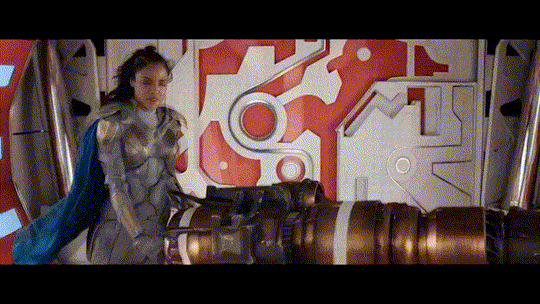
More Rouge in Sonic Prime please
#valkyrie rouge#cultural references#sonic prime#sonic prime spoilers#rouge the bat#batten rouge#sonic the hedgehog
15 notes
·
View notes
Text

A clever direct reference to a certain famous movie.
5 notes
·
View notes
Text
My favourite part of watching international shows/movies is when it's a historical or time travel show and there's one of those moments where someone says something that's clearly supposed to be a big moment or reveal but as an outsider you're watching like "...Kay."
Two that come to mind for me are this South Korean time travel show where it's revealed that the thus far nameless warrior is Choi Young and I had to stop the show to google him. Turns out he's a major historical figure from the 1300s who helped found the longest-lasting dynasty in Korean history (lasted for 500 years!).
"Ooooh, okay. Yeah, I can see how that'd be shocking."

The second was in a show set during the American revolution and Washington says they're gonna "cross the Delaware".
My response was "??? I thought Delaware was a state."

#i'm just saying#the real life of me#tv shows#international shows#television show#united states#south korea#kdrama#korean drama#period drama#time travel#cultural references#lost in translation
8 notes
·
View notes
Quote
And another thing is that, because we knew that from the time we've started the picture until it hit the screen, we never knew how long that would be, but we figured at least three years. By the time it started, until it was one the screen. So, we went on the supposition where we must use current gags. Because if we did, how silly it would be, if there wasn't something, I mean, a good example was that, once in a while, you bounced off of it, you just forgot it and you put something in that wouldn't be ridiculous later on. And particularly later, 'cause we didn't think our shorts were gonna last more than three years anyway, because there was no television or anything, or place for it to go. So, Friz had this "High Diving Hare" [...]. So one time, [Yosemite Sam] went running up on the top and, for some reason, Bugs had put a doorway there with a door on it. And so, Sam is just hammering saying "Open that door!". And then, he turns to the audiences and says "you notice I didn't say Richard". Well, at that time, which was around 1948, there was a song called "Open the Door, Richard", it was some girl trying to get her boyfriend to open the door [...] it didn't mean anything to me because I didn't even know it. And kids today, that's still on the picture, you can't get away from it. It's an example of what would've happened. And why do our cartoons hold up? And why do they continue to compete evenly with people throughout the years, four, five, ten generations? Because, I think there is none of that. And when it does, it sticks out so far that the kid thinks it's his fault, he doesn't understand it. And that's fine, I can't think of anything I'd rather do than putting a kid at fault.
Chuck Jones
#chuck jones#television#movie theaters#short films#films#topical humor#high diving hare#looney tunes#cultural references#open the door richard#quotes#1940s music#1940s songs#vintage music#old songs#vintage songs
14 notes
·
View notes
Text
A Breaking of Crows and Dogs - The Storyteller’s Guide to the “Dog Days” of Summer: The Folklore & Mythologies of the Autumnal Equinox
Twitter
Patreon
GitHub
LinkedIn
YouTube
This is one of my favorite moments in life. Every year, there is this moment when the tides and energies of some corporeal atmosphere beyond my understanding begins shifting. This usually occurs a week or two before the autumnal equinox.
This is when the crows return. It’s 5am and I’m lying in bed thinking of you, or one of you, out there, reading…

View On WordPress
#Ancient Cultures#Ancient Egypt#Celestial Phenomenon#Chinese folklore#creative inspiration#creative writing#Cultural References#Divine Beings#Divine Conflict#Dog Days#Folklore Tales#Folklore Traditions#Global Interpretations#greek mythology#Greek symbolism#Mythological Creatures#Mythological Stories#Narrative Inspiration#Nile Flood#Ominous Period#Roman Superstitions#Seasonal Celebrations#Seasonal Legends.#Seasonal Myths#Sirius#storytelling#Summer Heat#Summer Mythology#Three-Legged Sun Crow#world building
2 notes
·
View notes
Text
The Ultimate Fables Catalogue (C)
I know, I know, I haven’t released part “B” yet. But as it turns out, I finished the part C long before the part B, so I will release this one first.
In this continuation of the “Ultimate Fables Catalogue”, I will cover a part of the spin-offs. To be precise I will take a look at the two Cinderella spin-offs (Cinderella: From Fabletown, with love ; and its sequel Cinderella: Fables are Forever), and the entirety of the Fairest series (including its graphic novel, Fairest: In All the Land).
SPOILERS AHEAD! SPOILERS AHEAD!

The Cinderella spin-offs
Cinderella: From Fabletown, with love
# The title of the series is an homage to the James Bond novel “From Russia, with love”. Cinderella’s own adventures as Fabletown’s spy evoke those of James Bond and of the Bond girls. The writer of this series, Chris Roberson, evoked the two main influences of the plot by describing the comic as “On Her Majesty’s Secret Service meets Sex and the City”.
# Crispin Cordwainer is the shoemaker from the Grimm fairytale “The Elves and the Shoemaker”. His name comes from saint Crispin, patron of cobblers and leather-workers.
# Cinderella mentions “an ogre and a talking cat”, referencing Charles Perrault’s “Puss in Boots”.
# Among the magical items found among the Mundies, Beast mentions the “seven-league boots” (from Charles Perrault’s Little Thumbling), a “horn of plenty” (the Cornucopia), a magical flute (I don’t have any specific reference for this one) and a “singing sword” (I don’t have any clear reference, though the “singing sword” concept appears here and there - it is the name of an Arthurian novel by Jack Whyte, and an episode of the cartoon “The Legend of Prince Valiant”, among many other things).
# The silhouette of the tourists are seen, and while we already know of Mowgli and Cinderella, we will discover the other two to be Feathertop (see later) and the... what was originally planned to be the Huntsman and then became a Woodsman apparently (it is one of those unclear points). Cinderella in turn has her group of three spies: Puss in Boots (who likes to be known as the “Marquis of Carabas”), from Charles Perrault’s fairytale of the same name ; Dickory, the mouse that ran up the clock, from the nursery rhyme Hickory Dickory Dock, and finally Jenny Wren, whose lover Robin Redbreast was murdered - from the cycle of nursery rhymes surrounding Cock Robin (”Cock Robin Got Up Early ; Who killed Cock Robin? ; Jenny Wren Fell Sick).
# Aladdin, and the djinn of the ring, are both from the “Aladdin” story of the One Thousand and One Nights. I suspect his driver, Farid, to be the prince Farid from the One Thousand and One Nights story “Farizad of the Rose’s Smile” - given it is the only Farid character in the Arabian Nights I know of.
# The ghuls are creatures of Arabian folklore.
# Ultima Thule (named after the legendary island of Thule that cartographers of Antiquity believed to exist north of England) is the realm of Scandinavian fairytales, especially Norwegian, filled with trolls and talking polar bears and giant elks. Its former ruler was king Valemon, from the fairytale “White-Bear-King-Valemon”. Other inhabitants of Thule include the widow Gudbrand (wife of Gudbrand from “Gudbrand on the Hill-Side”), Askelädden (the famous Norwegian folktale character known as “Ashlad” in English), Little Freddy (from “Little Freddy with his fiddle”), Little Annie the goose-girl (from the fairytale of the same name), Butterball (from the Norwegian fairytale of the same name), as well as the ram and the pig, from “The Ram and the Pig who went to live in the woods by themselves”.
# The Fairy Godmother is here another “archetype character” in the likes of Frau Totenkinder, Prince Charming or Jack of All Tales. She was the fairy godmother of Cinderella, but also alongside her sisters the “good fairies” of the Briar Rose/Sleeping Beauty fairytale, and she secretly worked to help Rapunzel by sending the prince rescue her. The Fairy Godmother’s perpetual fight against Frau Totenkinder has notably been the source of numerous of the fairytales: it seems to have started out by Frau Totenkinder “ruining” the fate of Briar Rose by playing the role of the “wicked fairy/angered wise woman” in the tale, only for the Fairy Godmother to retaliate by sending the prince of Rapunzel (whose witch-adoptive motive was Frau Totenkinder). The evolution of her role throughout the fairy tales is also explained by this perpetual duel: after sending Prince Charming to save Briar Rose from Frau Totenkinder’s curse, the witch fought back by killing the Fairy Godmother’s two sisters with poisoned apples (evoking Snow-White), which is why she was alone when helping Cinderella ; and the reason her spells only last to midnight is because her powers were weakened due to her actions in the Rapunzel story, all of her efforts exhausting her spells so that they could only work for a day and no more. It is also confirmed that the prince of Rapunzel is NOT prince Charming, as the Fairy Godmother “reused” the same prince to save both Briar Rose and Cinderella.
The Fairy Godmother is also very clearly an homage, or rather a dark parody, of the fairy godmothers of Disney movies. Her being part of a trio of benevolent fairies looking like little grandmothers at the times of Briar Rose’s birth is a nod to Fauna, Flora and Merryweather, the three fairy godmothers of Disney’s Sleeping Beauty, while her being the kind, elderly, grey-haired, plump godmother of Cinderella is an obvious nod to Disney’s interpretation of the fairy godmother of Cinderella.
# The palace being made of glass is of course a nod to the glass slippers of “Cinderella”, but I wonder if it isn’t a reference to the Norwegian fairytale “The Princess on the Glass-Hill”, or something similar...
Cinderella: Fables Are Forever
# The title of the series is again a James Bond reference, this time to “Diamonds are forever”.
# The “Shadow Fabletown”, the Soviet community of Fables living beyond the Iron Curtain and opposing the American Fabletown, is composed of Ivan Durak (Ivan the Fool, a folk character of Russian fairytales), Tugarin Zmeyevich (the Slavic character known as Tugarin or Zmey Tugarin), Meng Chiang-Nu (the character of the Chinese folktale Lady Meng Jiang), the Seven Chinese Brothers (see below), and Anansi the spider (a folkloric character from West African tales and legends)
About Tugarin Zmeyevich, the Fables Encyclopedia explains a bit more the process behind choosing this character that turns into a dragon: they explain Tugarin Zmeyevich started out as the antagonist of a folktale where he was opposed to the Rusian folkloric hero Alyosha Popovich - and in the oldest/”first” version of this folktale Tugarin Zmeyevich was “merely” a man as tall as a giant, riding a horse that had fire coming out of its nostrils and smoke from its ears. However, throughout adaptations and expansions of the tale, Zmeyevich inherited the “breathe fire and smoke” traits of his horse, and then from a fire-breathing man became a dragon. So, for the Fables comics, they decided to have Zmeyevich look like a man at first, but be able to turn into a dragon at will.
As for the Seven Chinese Brothers, the Fables Encyclopedia also brings more information: they are actually part of a popular Chinese folktale merely known as “The Five Brothers” - which became well-known in the West thanks to Claire Huchet Bishop’s “Five Chinese Brothers” in the 30s ; but there are several variations of the story where the number of brothers change, up to seven or ten. And the idea of the five brothers being actually seven was also popularized in the English-speaking world thanks to Margaret Mahy’s “Seven Chinese Brothers” at the end of the 19th century.
# Dorothy Gale, aka “Silverslipper” is from “The Wonderful Wizard of Oz”, by L. Frank Baum. Beyond her first nickname (evoking the magical “silver slippers” of the book), she is also called “The wicked bitch of the east” (a nod to the Wicked Witch of the East from the book). Numerous other characters and entities from the Oz books appear: the Tin Woodman and the Cowardly Lion (from “The Wonderful Wizard of Oz”), the Chiss, Bungle the Glass Cat (”The Patchwork Girl of Oz”) and the Spoon Brigade (”The Emerald City of Oz”). We also see in the flashbacks all four witches of Oz (Good witches of the North and South, Wicked witches of the East and West), alongside the Munchkins and the Scarecrow.
# Other pop culture references include the line “Cheshire cat got your tongue” (referencing “Alice in Wonderland”), “Are you done quoting Donny and Marie?” (the television series of the same name) and Cindy describing the relationship of Bigby and Snow White as “That whole Cheers things”, paralleling the couple with the characters of Sam and Diane from the “Cheers” show
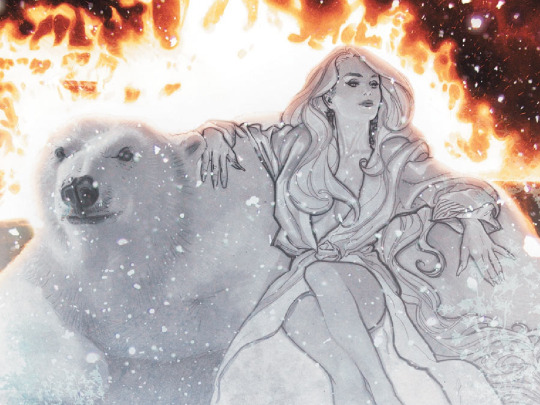
FAIREST
Wide Awake
# The main character is Ali Baba, from the One Thousand and One Nights story “Ali Baba and the Forty Thieves”. Morgiana of the same story is briefly mentionned in flashbacks. Interestingly, in the Fables universe Ali Baba went from a thief killer to the “prince of thieves” himself, something pointed out as weird in-universe. I believe it is a reference to how in American culture at the time of the comic’s release, the name of Ali Baba was so strongly associated with thieves you often saw it being reused for a thief character.
# The many modern USA culture references made by the Bottle Imp are too many for me to record them all.
# The fact of having the two “Sleeping Beauties” be a red-clad Briar Rose and the white Snow Queen isn’t just some fancy aesthetic choice. This plays on a common duality in fairytales between white and red that the comics itself already illustrated throughout the duo of Snow-White and Rose-Red. More interestingly, Ali Baba describing one as “the color of winter snow” and the other with “the color and heat of the first days of autumn” seems to be a play on the “seasonal” reading of the fairytale “Sleeping Beauty”, this analysis and belief that the fairytale actually depicts a metaphor for the cycle of seasons, Sleeping Beauty herself embodying nature falling asleep during the winter, and her awakening symbolizing spring.
# The version of Sleeping Beauty’s backstory here is quite interesting because it clashes with the one presented by the Cinderella spin-offs - a “retcon” here that is present inside the main series itself, since it began with the implications that Frau Totenkinder was the one who cast the curse, being the “evil witch” against the “three good fairies” (a la Disney), but then switched to make this new backstory canon. In this version of the story, we are more faithful to Charles Perrault’s version of the tale, since we have seven fairies gifting the child and the evil fairy being the eighth. The fairies here are actually a mix between the actual “fairytale fairies”, as in French fairytale fairies, and British fairies of folklore and legends. The seven gifts here are as such: beauty (for Katrya the Pure), wit (for Sofiya the wise - though it is the “wit of an angel”, so it is actually naivity), elegance/grace for Nyura the Graceful (which is extended to being graceful and elegant in all things... including the bedroom), walth for Ionna the Gifted, the talent of singing for Alyas the Noble (though it is “singing like a nightingale”, quite literaly, so singing like a bird), the talent of writing good songs and playing music perfectly for Yeva the Lively. The last gift of not dying but falling into an eternal sleep is given by Leysa the Defender against the curse of the evil fairy, Hadeon the Destroyer - and here, as with all magic process, we receive an explanation for the why: as it turns out, Leysa could only “split” the death curse across so many people the death became a “mere” endless sleep.
Beyond this, each of the fairy embodies a specific concept associated with fairies in general, or magic beings. Katrya the Pure is focused on purity and chastity (since her magical waters heal all knights chaste and noble) ; Sofiya the Wise is noted to have written a very famous grimoire ; Ionna the Gifted represents the “benevolent” fairies associated with darkness, since she is a daughter of the night who tames and traps nightmares (as opposed to Hadeon the Destroyer who is an “evil” fairy of darkness, shadow and fogs that rules over a typical “evil, nightmarish forest”), Yeva is strongly associated with music, merriment and parties, etc... The habit of Hadeon of turning her former lovers into objects she uses later (like into a boat) is also a very typical trope of fairy tales.
# In a flashback, Ali Baba is seen stealing from Abd al Quadir. He is a character from the One Thousand and One Nights story “Ala al-Din Abu al-Samat” (253rd night).
Lamia
# Lamia is of course the legendary monster/bogey-woman of Greco-Roman culture.
# Saint George, his sword Ascalon and the village of Silene are from the legend of “Saint George and the Dragon”. Saint George seems to embody here the archetype of the “dragon slayer-hero” since he lists other famous dragons among his list of kills: the Chimaera (not an actual dragon, but the fire-breathing Chimera of Greek mythology, killed by the hero Bellerophon), Illuyanka (a Hittite dragon killed by the god Tarhunz), Tiamat (the Mesopotamian goddess-dragon killed by Marduk) and finally Vritra (the Indian reptilian demon slain by the god Indra).
# When Beast lists the various fictional characters he becomes “like” during his various hunts for the Lamia, he mentions in order Auguste Dupin (created by Edgar Allan Poe), Sherlock Holmes (created by Arthur Conan Dole), Hercule Poirot (created by Agatha Christie), Sam Spade (from “The Maltese Falcon”) and Philip Marlowe (created by Raymond Chandler).
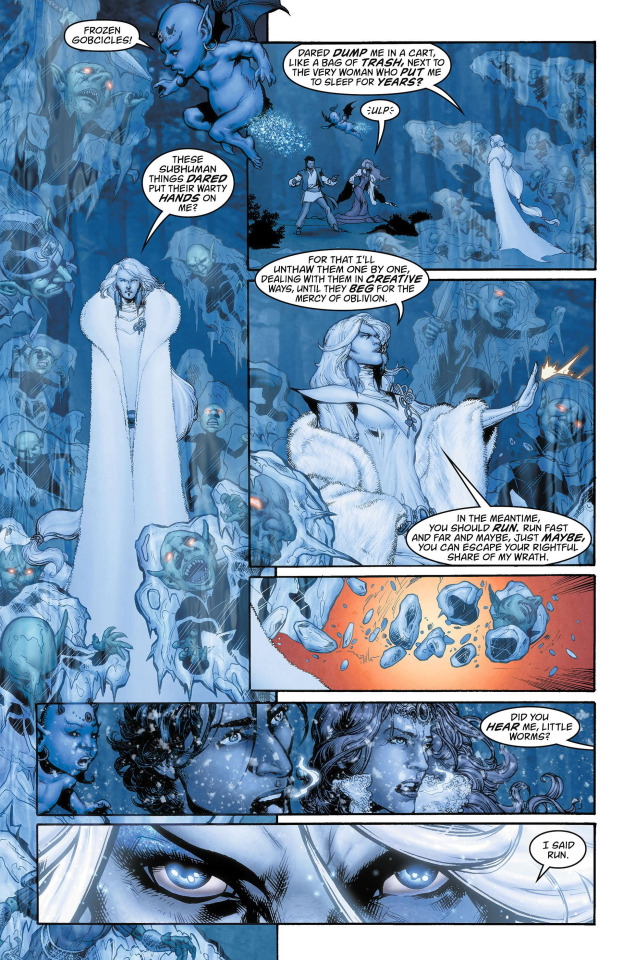
The Hidden Kingdom
# The three movies seen at the theater at the beginning are “Bunny Lake is Missing” ; “Don’t Look Now” and “Picnic at Hanging Rock”. Rapunzel later compares the flying origami attack to Alfred Hitchcock’s “The Birds”.
# This is I think the first time paintings are hidden around in the background. In Rapunzel’s flat there are two pictures on the walls: one is the poster for Kubrick’s “Clockwork Orange”, another is a reproduction of “The Lady of Shalott” by Waterhouse. Frau Totenkinder rather has in her flat Fuseli’s “The Three Witches”.
# Frau Totenkinder here appears mostly in her role of “the witch/adoptive-mother of Rapunzel”. Interestingly however, while Totenkinder is the witch that locked Rapunzel in a tower, and banished her after she slept with the prince, in the Fables continuity of the role of the witch in the Grimm fairytale got split with... the Fairy Godmother, who is revealed to have been the one preventing Rapunzel’s prince from returning to her.
# In the Japanese realm of Fables, the main characters include Mayumi (who is the Kuchisake-onna of Japanese ghost stories), Tomoko (a kitsune), a bakeneko (that just goes by “Neko”) and Katagiri (a kappa). Other supernatural beings coming from “The Hidden Kingdom”, the Japanese Homeland, include: funayûrey (ghosts of the drowned at sea), tanukis, a noppera-bo, a rokurokubi, an oni, an hitotsume-kozo, several kirin...
# When Neko first appears to Rapunzel, he imitates Totoro, from “My Neighbor Totoro”.
# Rapunzel briefly prays to the Jizo Bosatsu.
# Rapunzel, in her numerous travels throughout the Homelands searching for her missing babies, adopted several different identities. In the Hidden Kingdom she was Okiku, the famous Japanese “ghost” in the well. In the Ancient Greece equivalent in the Homelands she also played the role of Theseus, by slaying the Minotaur. And she is noted to have assisted to the “birth of an empire” by seeing twins by a she-wolf: they are Romulus and Remus, the legendary founders of the Roman Empire.
# The treacherous shogun Ryogan actually fulfills the role of both the jealous samurai who mutilated the Kuchisake-onna and the samurai that killed Okiku.
# When the Hyakki Yagyo, the “Night Parade of the One Hundred Demons” is invoked, we also see among the numerous yokai tengus, chochin’obakes, an hebi, the wanyudo, and a nue.
# Jack ends up thrown into the claws of the famous Japanese movie monster, Gdozilla.
# Lauren Beukes, the writer of this arc, listed her several inspirations as: the manga Tekkonkintreet, “The Pillow Book” ; the movies of Kurosawa, Miyazaki and Miike ; the work of the three Murakami (Haruki Murakami, Ryu Murakami and Takashi Murakami) ; “The Tale of Genji”, “Tokyo Vice” (no, not the television series, but the memoir of Jake Adelstein), and “The Illustrated Night Parade of the Hundred Demons”.
Aldered States
# The various suitors of Princess Alder include Mr. Pickles (from “The Magic Fishbone” by Charles Dickens), Trotty Veck (from “The Chimes” by Charles Dickens) as well as Farmer Giles (from Tokkien’s “Farmer Giles of Ham”).
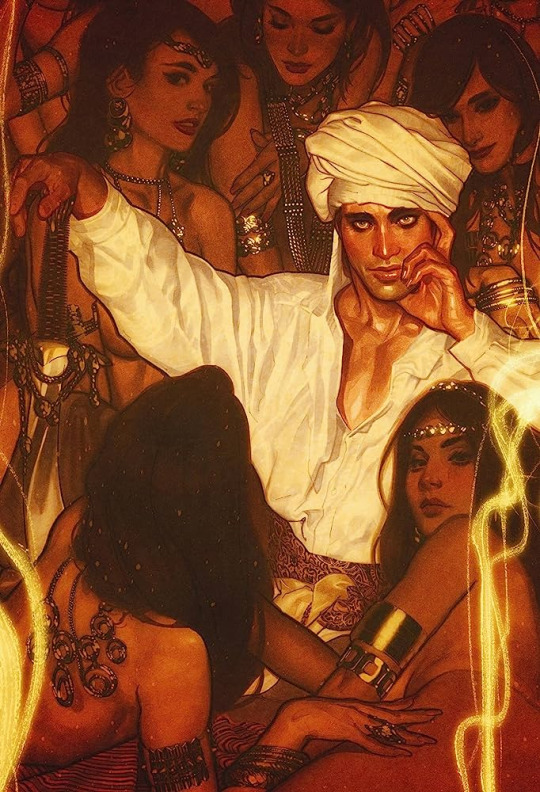
The Return of the Maharaja
# Nalayani is actually the past life of Draupadi, from the Indian epic “Mahabharata”.
# There is a LOT of characters from Rudyard Kipling’s The Jungle Book here: Tabaqui the jackal ; the dholes ; Nathoo ; Buldeo ; Pudmini...
# Prince Charming makes a reference to the “golden ticket”, from Charlie and the Chocolate Factory.
# Among beings from Indian folklore, beliefs, folktales and Hindu mythology/religion we have the asuras, the pishachas, as well as a host of Hindu gods - Rama, Ganesha, Manasa, Kamadhenu, Nandini... The Trishula trident is also important for the ending of the story.
Of Men and Mice
# The very title is a reference to the story “Of Mice and Men” by John Steinbeck.
# The cubs are being read one of the Harry Potter books - Harry Potter and the Chamber of Secrets to be precise.
# At Cinderella’s ball, the transformed mouse ends up seducing Lady Isabelle du Lac, daughter of Lord and Lady du Lac. I wonder if it is a reference to Edmund Dulac...
# I also believe the giant sentient humanoid rat-ninjas might be a reference to “Teenage Mutant Ninja Turtles”.
# The “King’s men” are the same from the nursery rhyme “Humpty Dumpty”.
# Rama is the divine hero of Hindu mythology/religion, while Varuna is... I am a bit confused because to my knowledge Varuna is an Hindu god, not a tiger-headed fish... The only tiger-headed fish I know of is the Japanese Shachihoko... This leaves me confused.
# The Rodgers and Hammerstein’s version of Cinderella is explicitely referenced here.
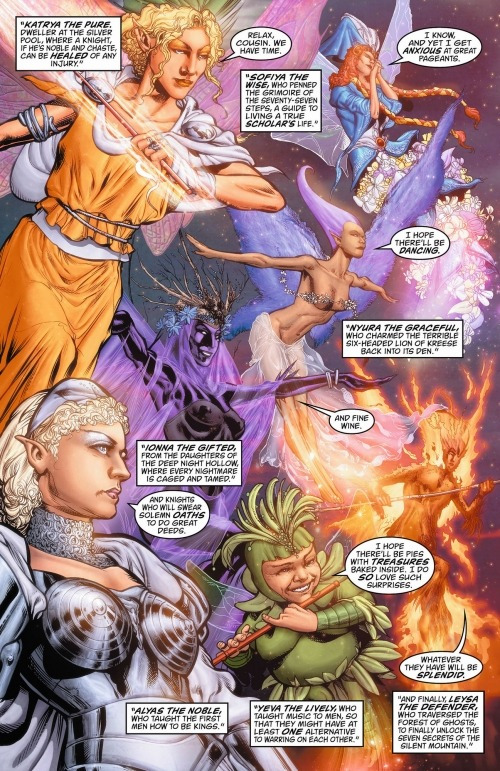
Clamour for Glamour
# Lady Maeve of Dunhollow seems to be Maeve/Mebd of Irish mythology.
# Mary, after losing her little lamb, took up gardening - and thus became the Mary from the nursery rhyme “Mary, Mary, Quite Contrary”.
# There is an entire section of the Farm called André’s Garden, where the Mean Sunflower Kid/Mister Sunflower lives, and we see here five other Fables living in this area: Snapdragon, Old Maid Hollyhock, the Dormouse Juggler, Alderman Poppy, and a woodpecker. Given this is the living area of the Sunflower, and named “André’s garden” I am pretty sure they are meant to be part of this same Victorian book of nursery rhymes written and illustrated by R. André/R. Andre from which the nursery rhyme “Mister Sunflower” comes. The problem is that I cannot have access to this specific book, which seems to not be easily available anywhere, so I cannot actually check...
In case you want to know, I will place here the Mister Sunflower nursery rhyme as it was revealed in the Fables Encyclopedia:
In your dress of brown and yellow
What a stiff-necked
Long legged fellow!
Must you stare, although the bees,
Settle on your face and tease?
Can’t you turn your big flat head
Till the sun has gone to bed?
Fairest in All the Land
# This is where Mrs. Ford was confirmed to be “the old woman at the ford in a river”, the deadly and ghostly “washing woman” from Irish beliefs and folklore.
# While not an exact reference, the seven magical swords kept in the office named after concepts (Mercy, Justice, Regret, Rage, Judgement, Love and Wisdom) are part of a long tradition in fantasy of magical swords with meaningful names (for example, take Tad William’s trilogy “Memory, Sorrow and Thorn”). The powers and nature of Maerorgladi, the Sword of Regret, is especially interesting, as its “hunger” forcing it to take a second life for each kill is clearly inspired by a famous trend of “sentient, soul-hungering swords” in fiction which was started by Poul Anderson’s “The Broken Sword” and Elric of Melniboe’s famous sword, Stormbringer.
# Hautboy/Cendrée, the wizard that created the seven magical sword, is confirmed to have lived in the Dark Tower, from “Childe Roland to the Dark Tower came”, before Roland actually arrived to said tower. The fact his main feats were creating buildings, magical chariots and magical weapons, makes him part of a long line of legendary magical smiths - in Fables, the main series, we already saw Weyland Smith and Daedalus appear, but I can also mention the Greek Hephaestus or the Finnish Ilmarinen. The Ilmarinen comparison is especially interesting, since the mythical ancestor of the evil swords I talked about (Moorcock’s Stormbringer, or Tolkien’s Gurthang) is a sentient, talking sword from the Kalevala. I have however very curious about the names chosen for him, both very French in nature... I think they might have been chosen at random (especially since “Cendrée” is actually the FEMALE form of the adjective “Ashen”/”Cindered”, the proper male form would have been Cendré), but maybe there is some obscure reference I am missing... though I slightly doubt it.
# The topic of “swords that must kill” is also very frequent in Norse sagas: to quote TV Tropes, “Tyrfing of the Saga of Hervor and Heidrek, the sword of Bodvar Bjarki in the Saga of Hrolf Kraki, and Dainsleif from the Prose Edda”. Which brings me to the hero the Sword of Regret was built for, Turgo of Nor, who is the stereotypical “Norse barbarian”. He likes in a world shaped after Ancient Norse society, and he is a muscular, bearded warrior always eating and drinking, but going berserk every time he drinks too much (which is often, since he is a drunkard). However, the fact that he keeps flying into mad rages he then regrets, and that he wears a hood made of animal pelts, make him VERY similar to Herakles of Greek mythology.
# The coat of Padarn Beisrudd is one of the “Thirteen Treasures of Britain”, part of Welsh folklore.
# The Blue Fairy mentions the “Unseelie Midwinter Ball”. The Unseelie Court is one of the two fairy “courts” or fairy “hosts” of Scottish legends, alongside the Seelie.
# I can’t help but wonder if Hadeon’s role as a sentient, magical but malevolent red car isn’t meant to be a nod to Stephen King’s Christine.
#fables#the ultimate catalogue#fairest#cinderella#cinderella from fabletown with love#comic#cultural references#fairytales#myths#folklore#cinderella fables are forever
5 notes
·
View notes
Text
Of Witchers and culture
I never thought I would play a computer game again. Last time I did that fifteen years ago as a teenager. But then I watched the Netflix adaptation of the Witcher, saw what they did to one of my beloved fandoms and how they butchered it and as I returned again to the books, I decided to give the games a try. I needed some new content and I’ve heard a lot of good about the third game especially.
Yes, I loved it, loved all those tiniest book references I could pick, but that’s not what I would like to write about. Never ever has it occurred to me that I would look at a computer game like I look at literature and movies or even tv series – in terms of cultural background and cultural references. I can easily say that the main plot and the visuals were only half of the fun I had while playing. The other half was picking cultural references. I am aware many of those are lost to foreign players, but for me it was amazing to hear random characters drop iconic texts from Polish classic literature, including tons of obligatory school readings, from Polish movies or even some unfortunate utterings of our politicians that were remembered or that ended up in memes.
Obviously, there is also a lot of multifandom winking to the players, like a letter from Smeagol Serkiss complaining about his lost treasure. But what I loved most were those references to Polish literature and Slavic folklore. I’m glad it made it to the western world too, though like I said, I’m aware many of those references are missed. For example, at one point I found a paraphrase of a poem written by Polish Jewish poet, in which he called out people on racism and superstitions (towards Jews). The original poem was written right before the WW2. In the game universe the poem addressed the racism towards non-humans.
I am aware this game has been around for several years now, but it was something completely new to me, something I most definitely didn’t expect. Yes, playing a computer game proved to be as time consuming as I assumed and hardly a productive way to spend free time, but I enjoyed it anyway and can’t say I regret it. It was a refreshing experience, lots of fun and laughter and a feeling that perhaps there is more to this kind of leisure than I initially thought.
#The Witcher 3#The Witcher#cultural references#Polish literature#Polish folklore#Geralt#Polish culture
20 notes
·
View notes
Text
youtube
HOW HAVE I NOT NOTICED THIS BEFORE. THEY PARODIED CANDY BY CAMEO!!! THATS MY JAM!! (original song linked for comparison)
IF YOU KNOW THIS SONG THEN YOU KNOW WHY IM FREAKING OUT RN LMFAO (it's a song about cocaine and also the stripper national anthem after they used it in this movie called The Players Club)
Cotc version: "Lemon, cherry, sour apple too, all of these flavors I never get to chew."
Cameo version: "Strawberry, raspberry, all those good things. Violets and gumdrops that's what you're saying to me."
#craig of the creek#cameo#80's music#culture#black culture#cultural references#cotc#cartoon network#cn#Youtube
12 notes
·
View notes
Text
I’ve rewatched “Darmok” (Star Trek: The Next Generation, season 5, episode 2). It’s an episode about aliens who all described as “incomprehensible” and whose speech was actually difficult to understand. When Enterprise met them, they transported Captain to the nearby planet so that he and the alien captain can fight a beast together for spiritual bonding. Picard, on the planet, and Data and Deanna on the ship almost at the same time realize that the aliens talk through metaphors and myth references. The alien captain was, unfortunately, killed by the beast, but they, in fact, did bond and Picard told him about Gilgamesh. Now, they are a few steps closer to creating a productive alliance with those aliens. That’s an interesting idea because it’s one of the rare cases when Star Trek finally explore the idea, that alien races can differ not only with appearance and political systems but also with linguistics and way of thinking, even universal translator can’t resolve. P.S. How those aliens speak - that’s basically how I speak, or at least how people who are not in the same fandoms as I and don’t understand the references (let’s be honest, mostly Star Trek references) I’m constantly making, see me.



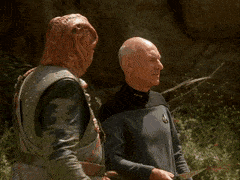



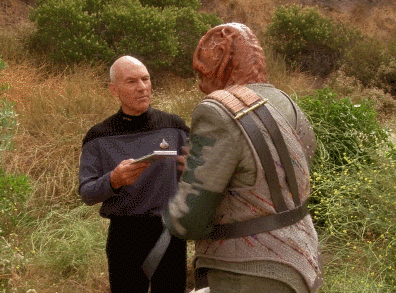



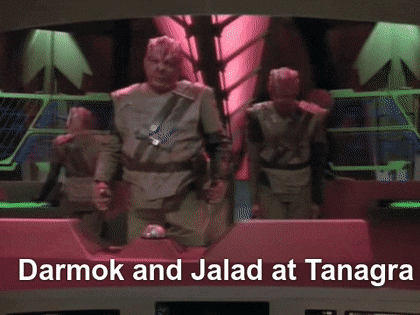
#star trek#star trek the next generation#star trek tng#st tng#st the next generation#darmok#captain picard#jean-luc picard#commander troi#deanna troi#commander data#data#metaphors#cultural references#gilgamesh
5 notes
·
View notes
Text
Quantum Blurt
What’s something most people don’t understand?
The stars give us a dirty wink, Light does more than you think. Quantum slips into bed, Particles vibrate the head, And forces thoughts to sync and link.

View On WordPress
#AABBA rhyme scheme#allegory#amusing#astronomy#clever wordplay#concise#connectivity#cosmic#creative writing#cultural references#dailyprompt#dailyprompt-1890#dirty wink#entertaining#five-line#forces#funny#humor#illumination#light#light-hearted#limerick#literary arts#lyricism#mental synchronization#Metaphor#metaphorical language#nature#nonsensical#particle physics
1 note
·
View note
Text
Fantasy Guide to Building A Culture

Culture is defined by a collection of morals, ethics, traditions, customs and behaviours shared by a group of people.
Hierarchy and Social Structures

Within every culture, there is a hierarchy. Hierarchies are an important part of any culture, usually do ingrained that one within the culture wouldn't even question it. Hierarchy can be established either by age, gender or wealth and could even determine roles within their society. Sometimes hierarchy can may be oppressive and rigid whilst other times, ranks can intermingle without trouble. You should consider how these different ranks interact with one another and whether there are any special gestures or acts of deference one must pay to those higher than them. For example, the Khasi people of Meghalaya (Northern India), are strictly matrillineal. Women run the households, inheritance runs through the female line, and the men of the culture typically defer to their mothers and wives. Here are a few questions to consider:
How is a leader determined within the culture as a whole and the family unit?
Is the culture matriarchal? Patriarchal? Or does gender even matter?
How would one recognise the different ranks?
How would one act around somebody higher ranking? How would somebody he expected to act around somebody lower ranking?
Can one move socially? If not, why? If so, how?
Traditions and Customs
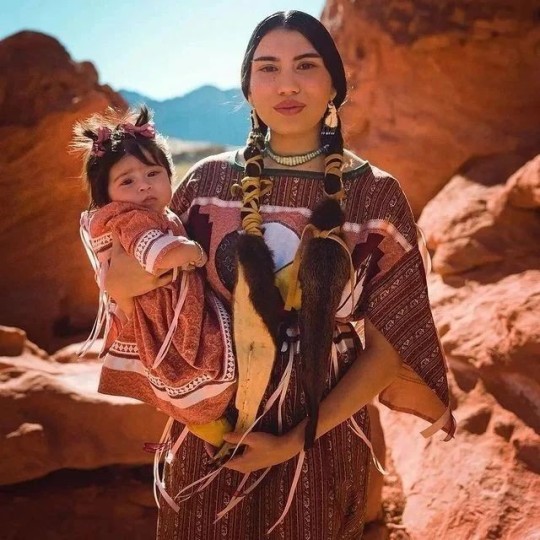
Traditions are a staple in any culture. These can be gestures or living life a certain way or to the way a certain person should look. Traditions are a personal detail to culture, they are what make it important. Tradition can dictate how one should keep their home, run their family, take care of their appearance, act in public and even determine relationship. Tradition can also be a double edged sword. Traditions can also be restrictive and allow a culture to push away a former member if they do not adhere to them, eg Traditional expectations of chastity led to thousands of Irish women being imprisoned at the Magdelene Laundries. Customs could be anything from how one treats another, to how they greet someone.
How important is tradition?
What are some rituals your culture undertakes?
What are some traditional values in your world? Does it effect daily life?
Are there any traditions that determine one's status?
Values and Opinions
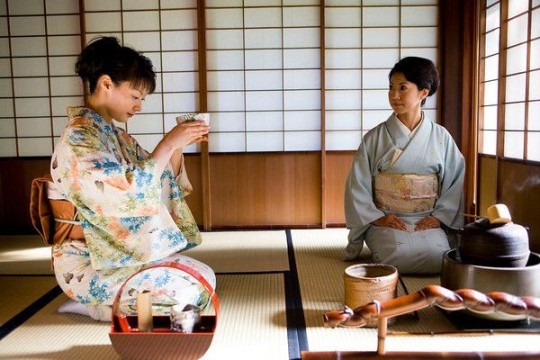
Values and Opinions are the bread and butter of any culture. This is the way your culture sees the world and how they approach different life hurdles. These may differ with other cultures and be considered odd to outsiders, what one culture may value another may not and what opinion another holds, one may not. There will be historical and traditional reasons to why these values and opinions are held. Cultures usually have a paragon to which they hold their members to, a list of characteristics that they expect one to if not adhere to then aspire to. The Yoruba people value honesty, hard work, courage and integrity. Here are some questions to consider?
How important are these ethics and core values? Could somebody be ostracised for not living up to them?
What are some morals that clash with other cultures?
What does your culture precieved to be right? Or wrong?
What are some opinions that are considered to be taboo in your culture? Why?
Dress Code

For many cultures, the way somebody dresses can be important. History and ethics can effect how one is meant to be dressed such as an expectation of chastity, can impose strict modesty. While other cultures, put more importance on details, the different sorts of clothes worn and when or what colour one might wear. The Palestinian people (من النهر إلى البحر ، قد يكونون أحرارا) denoted different family ties, marriage status and wealth by the embroidery and detailing on their thoub.
Are there traditional clothes for your world? Are they something somebody wears on a daily basis or just on occasion?
Are there any rules around what people can wear?
What would be considered formal dress? Casual dress?
What would happen if somebody wore the wrong clothes to an event?
Language

Language can also be ingrained as part of a Culture. It can be a specific way one speaks or a an entirely different language. For example, in the Southern States of America, one can engage in a sort of double talk, saying something that sounds sweet whilst delivering something pointed. Bless their heart. I have a post on creating your own language here.
Arts, Music and Craft

Many cultures are known for different styles of dance, their artwork and crafts. Art is a great part of culture, a way for people to express themselves and their culture in art form. Dance can be an integral part of culture, such as céilí dance in Ireland or the Polka in the Czech Republic. Handicrafts could also be important in culture, such as knitting in Scottish culture and Hebron glass in Palestine. Music is also close to culture, from traditional kinds of singing such as the White Voice in Ukraine and the playing of certain instruments such as the mvet.
Food and Diet
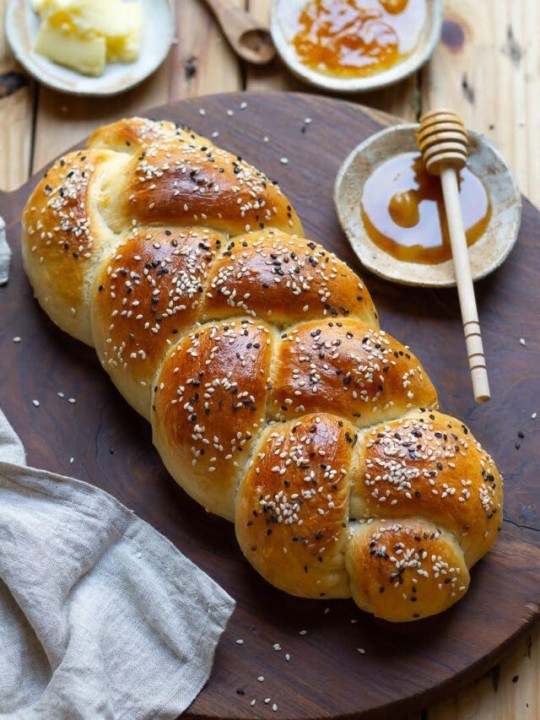
The way a culture prepares or intakes or treats certain foods are important to a culture. In some cultures, there is a diet yo adhere to, certain foods are completely banned. With Jewish culture, pork is prohibited along with fish such as sturgeon, along with shellfish and certain fowl. Meat must also be prepared in a certain way and animal byproducts such as dairy, must never be created or even eaten around this meat. This is known as kosher. The way one consumes food is also important to culture. In some cultures, only certain people may eat together. Some cultures place important on how food is eaten. In Nigerian culture, the oldest guests are served first usually the men before the women. In Japanese culture, one must say 'itadakimasu' (I recieve) before eating. Culture may also include fasting, periods of time one doesn't intake food for a specific reason.
What are some traditional dishes in your world?
What would be a basic diet for the common man?
What's considered a delicacy?
Is there a societal difference in diet? What are the factors that effect diet between classes?
Is there any influence from other cuisines? If not, why not? If so, to what extent?
What would a typical breakfast contain?
What meals are served during the day?
What's considered a comfort food or drink?
Are there any restrictions on who can eat what or when?
Are there any banned foods?
What stance does your world take on alcohol? Is it legal? Can anybody consume it?
Are there any dining customs? Are traditions?
Is there a difference in formal meals or casual meals? If so, what's involved?
Are there any gestures or actions unacceptable at the dinner table?
How are guests treated at meals? If they are given deference, how so?
#Fantasy Guide to Building A Culture#As promised#If I fail my German exam I'm blaming ye#Culture#Building a culture#Fantasy Guide#WorldBuilding#WorldBuilding guide#WorldBuilding help#Writing help#writing#writeblr#writing resources#writing reference#writing advice#ask answered questions#writers#writing advice writing resources#spilled ink#ask answered
8K notes
·
View notes
Text
How does one ensure the baby name will age well?
Choosing a name for a baby is one of the most exciting parts of preparing for a new arrival. However, it’s important to keep in mind that the name you choose will be with your child for life. While some parents opt for trendy or unique names, others prefer names that are classic and will age well with their child. So, how can you ensure that the name you choose will stand the test of time? Here…

View On WordPress
#aging well#baby names#classic names#Cultural references#current trends#family names#middle names#naming a baby#nicknames#popularity#Significance#timeless names#uniqueness
0 notes
Text

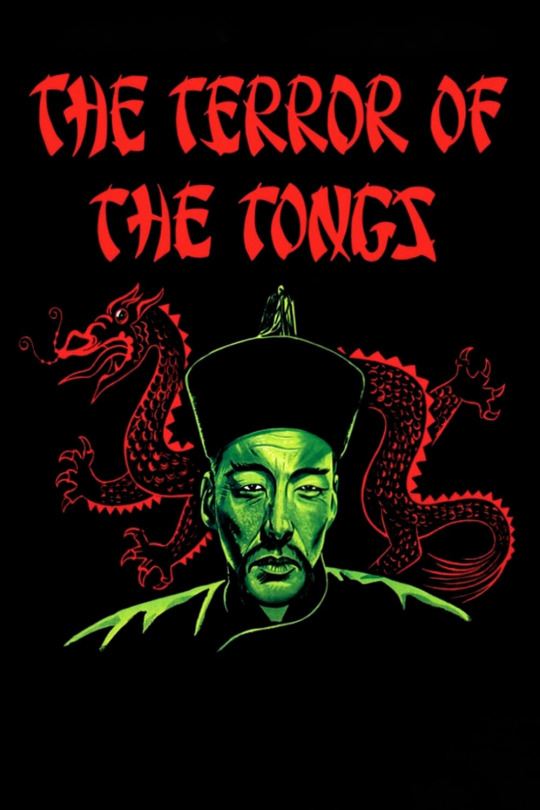

W A T C H I N G
Interesting Trivia:
On the film's opening matinee showing at a Picture House in Sauchiehall Street Glasgow, a crowd of rowdy teenagers and young adults both male and female ran down the street shouting "tongs" causing a melee in which the police had to be called. To this day in Glasgow gang culture the cry of "tongs ya bass" can often be heard wherever youths come together to fight in a show of territorial loyalty to the "Real Calton Tongs" a 1960-1970s Glasgow gang, the surrounding gang area is unofficially referred to as "Tongland".
(Although it may be an apocryphal urban myth.)
#THE TERROR OF THE TONGS (1961)#CHRISTOPHER LEE#ROGER DELGADO#Geoffrey Toone#Yvonne Monlaur#Marne Maitland#Brian Worth#Ewen Solon#Richard Leech#Charles Lloyd-Pack#Marie Burke#Burt Kwouk#ADVENTURE FILM#HAMMER FILMS#WATCHING#HISTORICAL FILMS#TW: YELLOWFACE#cultural references#trivia#movie trivia
0 notes